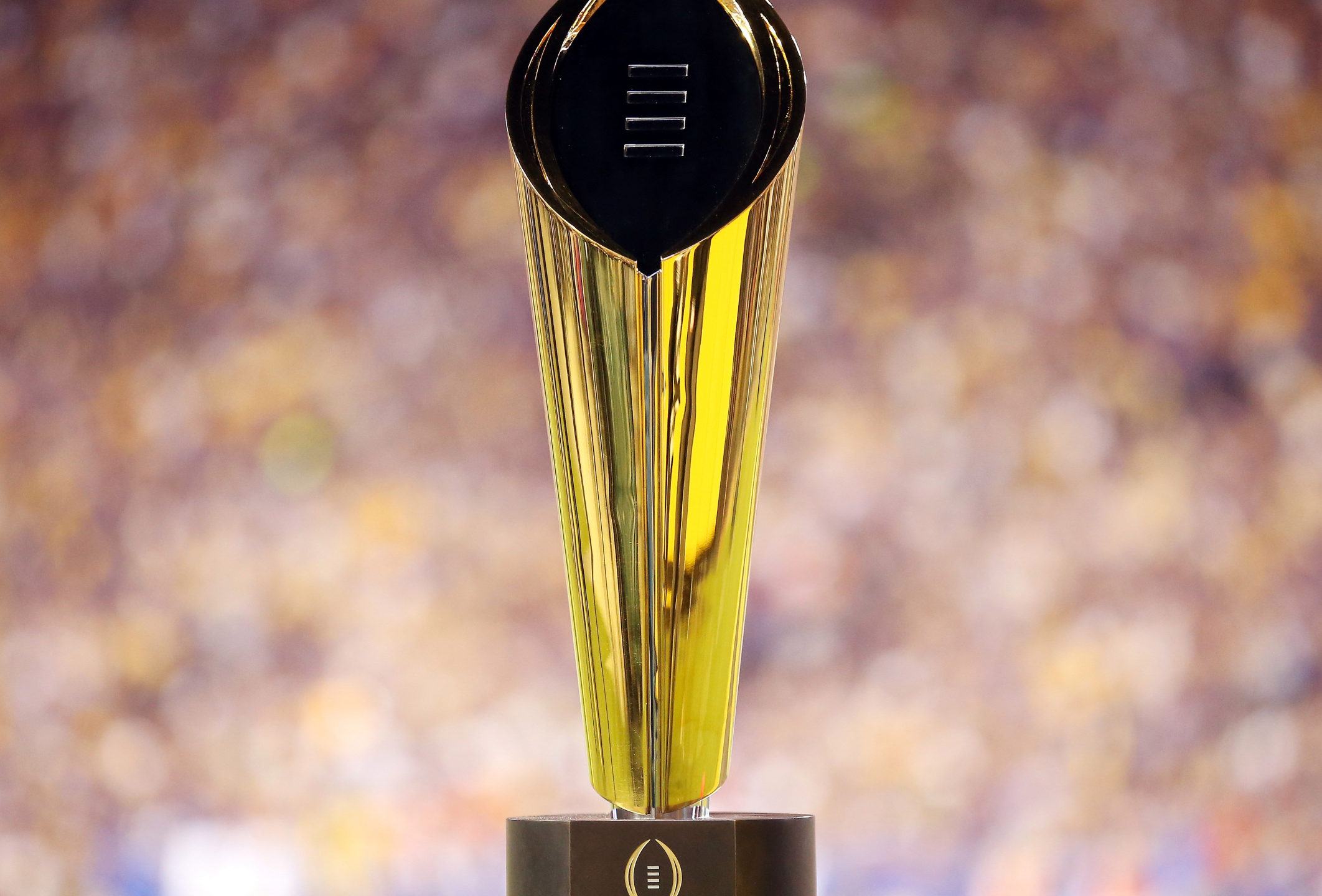The College Football Playoff Solution That Will Never Happen

There has been some recent talk of the College Football Playoff expanding. It won’t happen anytime soon as the current agreement doesn’t expire until after the 2025 season, but the CFP committee is seriously considering a tournament that includes anywhere from six to 16 teams.
It would be a huge mistake.
Expanding the playoff to include more teams sounds like a great idea, but in reality it only complicates the purpose of the CFP. That, of course, is to crown the best team in the nation.
Yes, there are the typical arguments. It starts with something about equity or fairness. Teams like Alabama, Clemson, Ohio State, and a few others dominate the CFP field. Yes, they do. That’s because they are the nation’s best teams.
Other arguments may center on the FCS, Division II and Division III models where their playoffs all consist of more teams. In Division II for example, 28 teams make the playoffs, seven each in four regions. It works in those divisions, but at the FBS level if you truly want to find the nation’s best team there is one solution.
It will never happen, but here is how the College Football Playoff can always produce the nation’s best team.
Restructure FBS
It all starts with the NCAA restructuring the Football Bowl Subdivision. It needs to contain exactly 128 teams. Currently, there are 130 teams. Two have to go. A couple of years ago, the University of Idaho moved back to FCS from the FBS. It was a wise move.
It would be a wise move for teams like UMass or New Mexico State or even UTEP. Of course, these moves are unlikely to ever happen because these schools want a piece of the FBS pie. That pie includes lots of money for their respective universities.
Anyway, eliminate two teams and move them to the FCS. With 128 teams, the NCAA can reorganize into a total of eight conferences. Four of the conferences will be “Power” conferences with the likes of Alabama, Ohio State, etc. The other four conferences will be “Group” conferences with teams that include teams from the Sun Belt, MAC, etc.
This, of course, won’t happen either. Imagine telling the Big 12 (which only has 10 teams) that it is being disbanded and its members will be in new conferences. So, the NCAA reorganizes all its FBS teams into one of eight conferences. The conferences would go back to being based more on geography and all independents would be placed in a conference (yes, Notre Dame is in one too). Each conference will have 16 teams divided into two divisions with eight teams each.
The Regular Season
The regular season has to have meaning. Teams will play 11 games and that’s it. This won’t happen either as more games mean more money from television revenue. But, teams play too many games as it is. Cut it to 11.

Out-of-conference rivalries would still exist under new plan.
Teams would play each team in their division and then would have four remaining games. Teams could cross over to play two teams from their conference’s other division and then use the other two to play teams in other conferences. The idea would be to allow for any rivalry games like Georgia-Georgia Tech or the renewal of rivalry games like Oklahoma-Nebraska.
Note that none of the remaining four games could be used to play FCS teams. That practice would come to an end. Conferences could continue to play championship games between the winners of the divisions, but those games would be built into the 11-game schedule.
Bowl Games
There are just way too many bowl games. Cut it down to 25 (never going to happen) and allow 50 teams to get in. The days of the .500 team getting into a bowl game would end. You want to go to a bowl game? Win more regular season games.
Now, there would be four major bowl games. For those that remember, the Rose, Sugar, and Orange Bowls were the kings of the bowl games. Pick one more, either the Fiesta or Cotton. These four bowl games serve a purpose.
Go back to the old tradition of the Big Ten versus the Pac-12 in the Rose Bowl and the ACC against the SEC in the Sugar Bowl. The next two highest-ranked non-conference champions would play each other in the Orange Bowl. The other bowl game – we’ll say it’s the Cotton Bowl – would feature the highest-ranked Group of 4 team against the next highest-ranked non-conference champ.
Essentially, what you have are the eight best teams in the country. Rankings still matter. The regular season still matters. Then, you add in some subjectivity with the College Football Playoff committee to make sure that we get it right. Here’s how it would work.
The Playoff
Nothing happens until the bowl season is over. Once the bowls are completed, we can determine which teams make the playoff. In order to automatically qualify, a team must win a Power 4 conference, win a major bowl game, and be ranked No. 1, 2, or 3 in the nation.
Using the past season as an example, Alabama won its conference, won a major bowl game, and was ranked in the top-3. That criteria gets the Tide into the playoff automatically.
Now, in the current playoff setup it is nearly impossible for a non-Power 5 team to make the playoff. In the new playoff, a Group of 4 team could make it if they win their conference, win a major bowl game, and the team is unbeaten.
Consider Cincinnati from last season. The Bearcats won the AAC and in the new system would have played in a major bowl game as the highest-ranked Group of 4 team. Let’s say they win that game. They would have the major bowl win and would be unbeaten. That’s an automatic qualifier and that’s how a non-Power 4 conference team can actually make the CFP.
Finally, a team can get in as a wild card if they have either a conference title or a major bowl victory and they are ranked No. 1 or No. 2. There have been instances recently where a team (Alabama comes to mind) did not win its conference championship but was highly ranked. They would still have the opportunity to qualify for the playoff.
Now, the committee then goes to work on the playoff. In some years, there would be just two teams that make the playoff. In other years, there may three teams that qualify. No. 2 plays No. 3 and the winner plays the top-ranked team. And finally, some years would require a full four-team playoff.
The committee would always strive to play it out on the field. Take last year as an example. Alabama and Clemson won their conference championships. Clemson beat Notre Dame in the ACC title game. That eliminates the Irish. Ohio State was also an unbeaten conference champion (yes, COVID, six games, blah, blah). No. 5 Texas A&M and head coach Jimbo Fisher can cry all they want. They had just one loss, but they weren’t a conference champion (the regular season matters).
Under the new setup, Clemson and Ohio State would have played and the winner would have faced Alabama for the national title. Interestingly enough, that’s just about how it worked out. Anyone that wants a two-loss Oklahoma, a three-loss Florida, or a three-loss North Carolina in a playoff doesn’t really want to find college football’s best team. Ultimately, that is the only purpose of the CFP and it should stay that way.
















